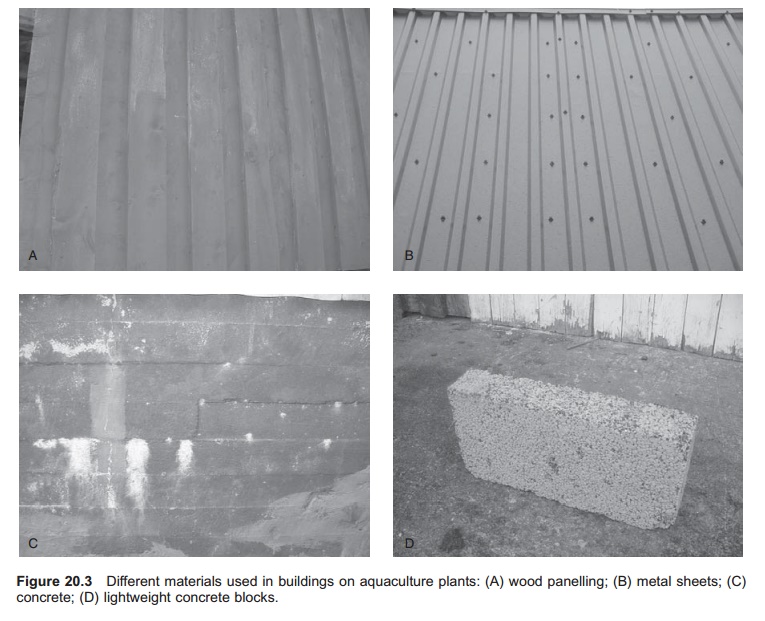Chapter: Aquaculture Engineering : Buildings and Superstructures
Materials - Buildings and Superstructures in Aquaculture Engineering
Materials
Various
materials are used for constructing buildings (Fig. 20.3). Wood is simple to
work with and simple to join together. Normally it is cheap, at least in
smaller buildings and in areas with timber. It is used in walls, roofs and
load-carrying constructions. To increase the strength and the length, glued
beams can be used. Wood may also be part of constructions, for example in
chipboard panels.
Metals such as
steel or aluminium are also quite easy to work with; pieces are either welded
or screwed together. Metals are much used in load-carrying constructions, such
as beams or frame-work. Metal plates are used for covering interior and
exterior surfaces on walls and roofs.
Concrete is a
widely used building material. It is made of a mixture of sand and gravel with
cement that functions as a glue, and water. After mixing followed by some hardening
time this makes a permanent construction. The method of mixing and proportions
of materials used will give concrete of different strengths.

Concrete has
good compressive strength but poor tensile strength. Therefore iron is used,
either as rods or mats, as reinforcement in concrete to enable it to withstand
tension, while the concrete can withstand compressive forces. In small constructions,
concrete is quite simple to handle and work with, and in addition it is fairly
cheap. It can either be mixed on site or in a factory and delivered in special
trucks ready mixed but not hardened. This latter method is most normal in
larger constructions.
Concrete can
also be delivered as prefabricated elements which are finished and hardened.
Elements, such as beams, may also be pre-stressed to increase tolerance to
higher forces without increasing the weight too much. Sizes of components vary
from small blocks to bars to complete parts of buildings, such as wall elements
or roof elements. Concrete may also be used for beams in load-carrying
constructions.
A lightweight
version of concrete is also avail-able as blocks and bars. Here the gravel is
replaced with a light material, for example, expanded clay products
Related Topics